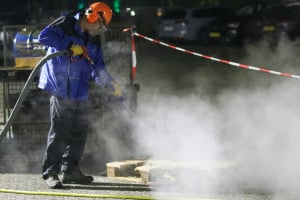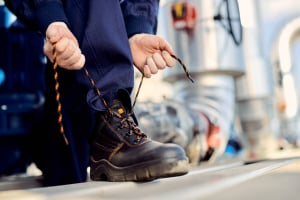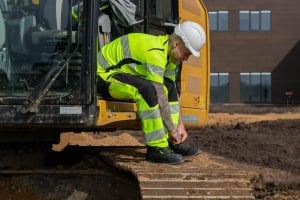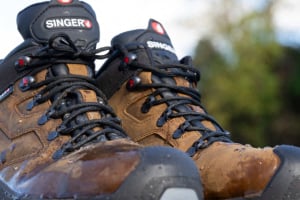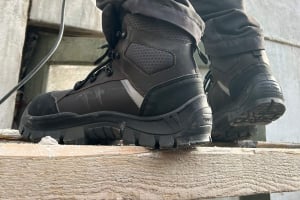
Essential PPE for a painter
Working inside, but also outside a building, a painter needs specific equipment to protect himself from serious accidents and the various risks associated with his job. Covering all parts of the body, PPE also aims to improve their comfort and well-being so that they can perform their tasks in the best conditions.
What are the risks associated with painting work and using the spray gun?
There are many risks encountered during painting work if we only mention eye irritation, skin problems due to solvents, head shocks, respiratory problems linked to abrasive dust, etc.
Who is responsible for providing PPE for industrial painters?
Whatever the profession and activity of the professional, PPE is all the responsibility of the employer. This is also mentioned in article R. 4321-4 of the Labor Code which requires that the latter must provide them free of charge and ensure that they operate properly and are maintained.
What are the three mandatory PPE for a painter, a chemist or an electrician?
There are three main categories of PPE:
- Class I PPE: such as jackets, gloves, goggles which cover minor risks.
- Class II PPE: such as hard hats, painter's goggles that protect against significant risks.
- Class III PPE: which provides protection against serious risks considered irreversible or fatal, such as breathing apparatus, life jackets, harnesses, safety harness
Which standard defines PPE for painters in construction and interior work?
The personal protective equipment for painters must comply with the standards:
- EN ISO 20345 for safety footwear. Added to this is the additional SRC standard, as well as the HRO, WRU, HI, CI, CI standards, the S1, S2 and S3 markings;
- EN 374, 420, 3881, 411 and 407 for construction gloves;
- NF EN 397/A1 and 352 for safety helmets (ear muffs, earplugs);
- EN ISO 13688: for jackets and painter's pants;
- EN 353-1, 352-2 and 360 for fall protection;
- EN 20471 for high-visibility clothing;
- EN 136, 140, 141 and 143 for respirators or masks for painting;
- NF EN 166 for protective goggles.
What personal protective equipment is essential for a painter?
To avoid any mechanical and physical risk, painters must wear:
Protective gloves
Whether it's a disposable, coated, foam, nylon, cut-resistant or nitrile model, a pair of gloves is always necessary. This accessory protects the painters hands from sharp objects, chemicals, biological and abrasion hazards, cold and heat, as well as potential injuries.
Respiratory masks
Model with valve, foldable, disposable, this accessory protects the painter from inhaling dust and toxic vapours, as well as volatile organic compounds found in paints.
Goggles
There are several types of this accessory: anti-fog goggles, anti-scratch, full-coverage, with or without a frame, etc. However, whichever model you choose, its role remains the same: to protect the painter's eyes from dust and small particles, and to improve his vision, especially in fairly difficult conditions.
Construction helmets
The helmet protects the painter's head and face from splashes of paint and debris, but also from shocks and injuries. Some models even have visors to increase eye protection and sweatbands for outdoor work in high heat.
Fall arrest equipment
A painter often has to work at height, which is why it is essential to equip him. You can use a full body harness with a screw carabiner, a drawstring bag, a restraint lanyard, a positioning belt, an automatic retractor or even straps. This equipment protects him in the event of a fall.
Work clothes
These include overalls, jumpsuits, trousers, jackets, shorts, T-shirts, down jackets, hoodies and work Bermuda shorts. While lightweight workwear is best worn in the summer, those with padded sleeves and linings protect against the cold and bad weather. These PPE also protect the painter's personal clothing from dirt and paint stains.
Safety shoes
These personal protective equipment protect the workers feet from punctures, cuts, slips, falling objects , injuries, etc. The safety shoes for painters come in several models: safety trainers, rangers, low and high shoes, it's up to you to choose the pairs that suit you.

